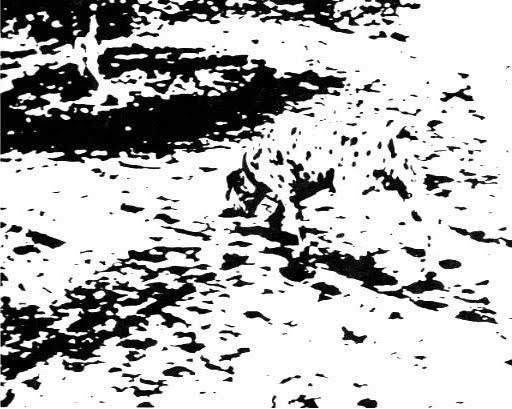Gestalt Principles
Gestalt is a psychology term which means "unified whole". It refers to theories of visual perception developed by German psychologists in the 1920s. These theories attempt to describe how people tend to organize visual elements into groups or unified wholes when certain principles are applied. These principles are:
Figure and ground
The eye differentiates an object form its surrounding area. a form, silhouette, or shape is naturrally perceived as figure (object), while the surrounding area is perceived as ground (background).
Balancing figure and ground can make the perceived image more clear. Using unusual figure/ground relationships can add interest and sublety to an image.
Left: As I look in this image, I see objects(figure) on a shelves but while the eyes perceives on it, I then see a skull that is being defined by the background(ground) wall.
 Right: These flowers are the figure and they make a word "sex" from the stems which also that is a figure and the ground is the background of these flowers.
Right: These flowers are the figure and they make a word "sex" from the stems which also that is a figure and the ground is the background of these flowers.
Continuity
Continuation occurs when the eye is compelled to move through one object and continue to another object.

 In this piece of jewellery these circles continues to the
In this piece of jewellery these circles continues to the bottom of this object and they bring similarity principle.
Closure
Closure occurs when an object is incomplete or a space is not completely enclosed. If enough of the shape is indicated, people percieve the whole by filling in the missing infomation.
Closure is the based off idea that identifiable shapes may be created through the use of positive and negative spaces.
This abstraction shows a dancer to illustrate how positive and negative elements may be used to create identifiable forms.
Gucci Necklace with beaded chain and heart toggle closure
Proximity
Proximity occurs when elements are placed close together. They tend to be perceived as a group.
Left: Links Bracelets
Right: Inductiveproximityswitches,capacitive proximity switches, photo electric sensor are placed together as a group in this image.
Similarity
Similarity occurs when objects look similar to one another. People often perceive them as a group or pattern.
Street art image that shows a shoe with legs wearing the same shoe, this big shoe is being the silimarity to the shoes on the legs.
The fire woods behind this lady are in proximity and also illustrates the gestalt principle of similarity.
Symmetry
Symmetry states that the viewer should not be given the impression that something is out of balance, or missing, or wrong. If an object is asymmetrical, the viewer will waste time trying to find the problem instead of concentrating on the instruction.
References:
graphicdesogn.spokanefals.edu













